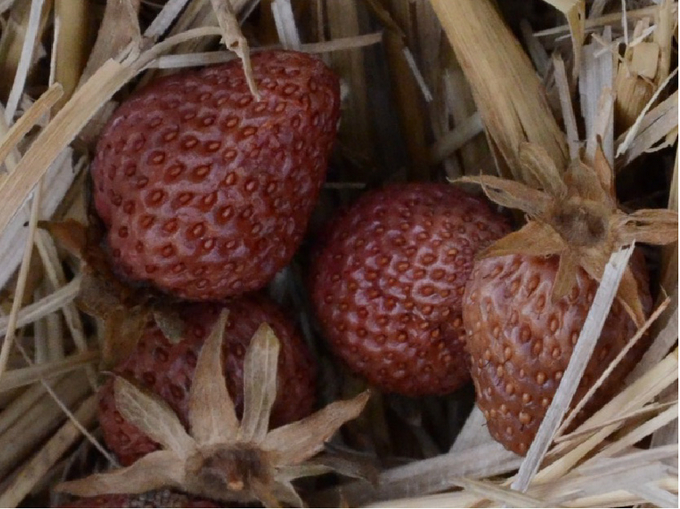Phytophthora cactorum on strawberry
Phytophthora cactorum
Biology
Infections occur from the soil, from where the pathogens colonize the rhizomes and roots or reach the fruit via rain splash. Due to lower temperatures, P. cactorum activity decreases again in October and November.
As infected plants die, the pathogens re-enter the soil. There, P. cactorum forms permanent organs that are highly resistant to weather conditions or tillage and can persist in the soil for many years. If a host plant is cultivated, the pathogens can cause new infections.
Damage symptoms
At the beginning of rhizome rot heart leaves of the plants wither, then often turn blue-green and then turn brown. Death of the plants occurs within a few days.
If the rhizomes are cut open, reddish-brown discoloration can be seen with clear demarcation from healthy tissue. The roots are asymptomatic at the beginning of the disease and die as the disease progresses. When diseased plants are lifted, they often snap off at the top of the crown.
Immature, infected fruits are brown and have a leathery consistency. If infection occurs just before harvest, berries have a pale color and browned vascular bundles. Diseased strawberries taste bitter.
Symptoms often appear either about four weeks after planting or in the spring after flowering. Frigo plants are more sensitive to the disease than green plants.


Propagation and transmission
Rhizome rot is more prevalent on cool, moist sites or in years with high rainfall. Permanent forms of P. cactorum can survive in the soil for years without a host plant.
In spring, strawberries are particularly susceptible to rhizome rot infestation because the plant is under stress from growth, flower and fruit development. The same pathogen that causes rhizome rot is also responsible for leathery berry rot.
Prevention and control
- Heavy and wet soils should be avoided for strawberry production, if necessary provide drainage of wet soils. Planting on embankments is recommended or contact with the soil should be avoided by straw bedding.
- The introduction of green manure or other organic matter helps to improve the soil structure.
- It is also recommended to plant the following tolerant varieties: "Florence", "Pandora", "Symphony", "Pegasus", "Darselect", "Everest", "Bolero", "Tango", "Charlotte", "Camarosa", "Aromas", "Marmolada".
Specialist information
Projects
ERA-NET EUPHRESCO II: Evaluation and testing of pathogens on strawberries
Last updated: 05.09.2024
automatically translated